Reading Time: < 1 minute It’s often mistaken for a type of snapdragon, but don’t be fooled by this invader of fields and pastures. Originally brought from Europe as an ornamental, quick-spreading yellow toadflax — a.k.a. wild snapdragon — is found all across North America. It spreads by both seed (up to 5,000 seeds per stem) and its creeping root […] Read more
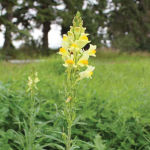
Don’t be fooled by yellow toadflax’s good looks
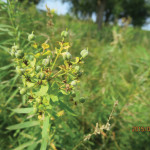
Don’t let this invader take hold
Reading Time: < 1 minute Leafy spurge is common throughout Alberta due to its ability to adapt to a variety of soil types through its extensive creeping root system. Stems are smooth and arranged in clumps, can grow up to a metre tall, and contain a milky latex. When it comes into contact with skin, the latex can cause irritation […] Read more
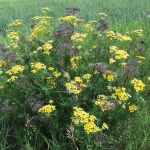
This poisonous invader is growing in numbers
Reading Time: < 1 minute Introduced from Europe in the 1600s as an ornamental species, common tansy (sometimes called tangee) has been spotted across central Alberta and its numbers have been on the rise in recent years. The weed is particularly threatening in pasture and riparian habitats, but can also be found in disturbed soils and flower beds. Most livestock […] Read more
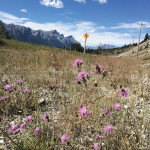
Don’t let this on your rangeland
Reading Time: < 1 minute Spotted knapweed has been reported in many areas of the province, especially ones with lots of vehicle traffic. Calgary, major highways, and border crossings are just a few areas with high densities of this prohibited noxious weed. The plant skeletons get caught in vehicle undercarriages, contributing to its spread. It also thrives in disturbed sites […] Read more
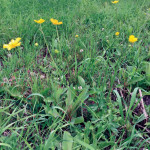
Bitter weed a common sight in Alberta
Noxious grassland invader: Tall buttercup
Reading Time: < 1 minute Tall buttercup is often found in Alberta, including in the MD of Lesser Slave River as well as Big Lakes, Yellowhead, Clearwater, and Mountain View counties. This plant contains a bitter, irritating oil that is toxic and can harm grazing livestock, especially cattle. This weed is an invader of wet areas, preferring humus soils, but […] Read more

Invader blasts its way into wet areas
Reading Time: < 1 minute Himalayan balsam can be spotted in a number of municipalities across Alberta, and is especially common in flower beds. Before it was listed as a prohibited noxious weed, Himalayan balsam was a very popular ornamental. It was even readily available in greenhouses. Himalayan balsam is incredibly invasive in wet areas — mature seed capsules explode […] Read more
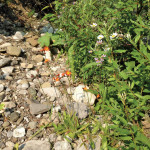
Mountain invader heading towards us
Reading Time: < 1 minute Orange hawkweed has been spotted in recent years along the eastern slopes of the Rocky Mountains. It is common in forestry cut blocks and is spreading rapidly down ATV trails and roads. Hawkweed is an extremely invasive plant, with a triple-threat arsenal of reproductive methods. It is not only a prolific seed producer, but has […] Read more
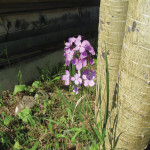
Dame’s rocket, a beautiful but rampant invasive species
Reading Time: < 1 minute It’s beautiful, fragrant, and pollinators love it — but Dame’s rocket can spread at an alarming rate, especially in riparian areas. It is found across Alberta, and there are anecdotal reports this prolific seed producer from the mustard family is becoming more common this year. It’s found quite frequently at old farm sites, but is […] Read more
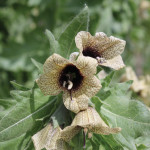
‘Stinking nightshade’ a deadly menace
Noxious weed is poisonous to livestock and humans
Reading Time: < 1 minute In 2014, black henbane was spotted in Wheatland, Starland and Kneehill counties, and as far north as Lesser Slave River. All parts of this noxious weed are poisonous to livestock and humans. Poisoning can result in impaired vision, convulsions, coma, and death from heart or respiratory failure. Although known as ‘stinking nightshade,’ it does not […] Read more

A highly destructive weed to be feared
Reading Time: < 1 minute Knotweed has been spotted in recent years in Trochu, Sylvan Lake, Leduc, Parkland County, Grande Prairie, Calgary, and Waterton National Park. There has also been a report of visitors to B.C. returning with a clump of roots to transplant into their garden. This prohibited noxious weed is very destructive, and can grow through cracks in […] Read more

